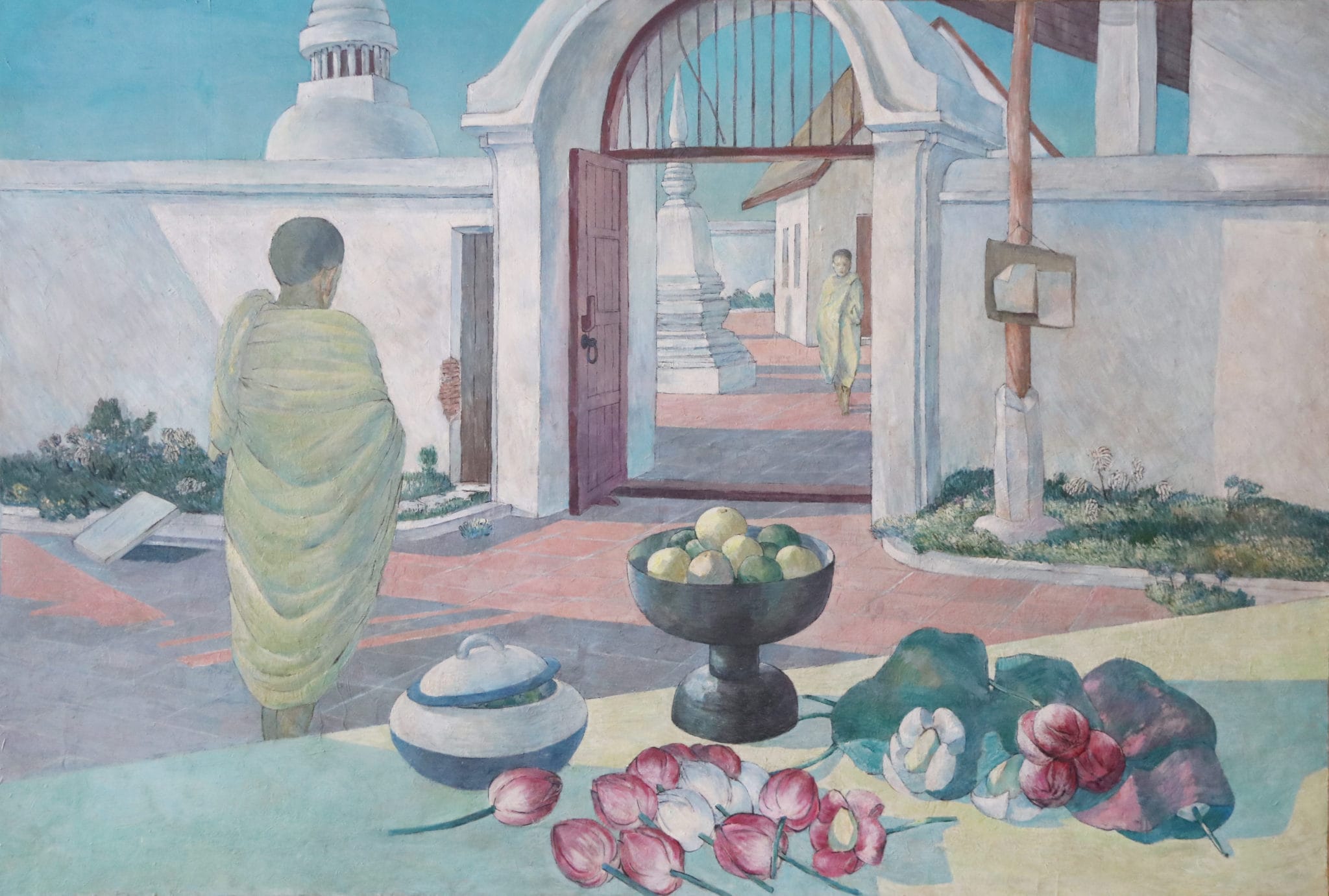Artist : Thawee Nantakwang
Technique : Oil on board
Year : 1958
Size : 122 x 180 cm
Over 50 years ago, “Temple” by Tawee Nanatakwang was brutally destroyed by intruders who picked up the painting that was proudly hung in the artist’s office and broke it in half. From that day, Tawee never stepped foot back into that office again.
“It was like a heartbreak for him” said his daughter Maynart Nantakwang.
“Temple” is a painting of Wat Pho or the Temple of the Reclining Buddha, of a scene from the back door entrance to the sacred site. Two monks are seen facing each other, one inside the temple and one outside. The one outside has his back towards the viewer standing next to offerings of fruits and flowers. Other details such as the open manhole cover resting on the curb and the notice board with two notices pinned also frame the piece. Mirroring this scene, another monk is walking towards the one standing outside from the inside of the temple grounds. This very surrealist portrayal of what could be a morning routine for monks, shows a type of stillness inside the holy site, protected by teachings of the Buddha versus the chaotic details that are waiting outside of the door through a portal that connects the two worlds together. It is one of the most rare work from Tawee as it is from the early days of his career and painted with such serene pastel colours.
The painting went missing for over 30 years until it was returned to Maynart by Nipon Pritakomol, an artist and professor at Silpakorn University. He was the one who saved it, after all these years.
The painting needed to be restored immediately as it has deteriorated so much. Restorers found that there were chipped paint, paint flaking off and cracks in the painting. As it has already been restored once, the current restorers had to use acrylic glue to first fix the paint layers, then dabbed certain spots with water and alcohol. This will help the acrylic glue to penetrate the pictorial layer by working as a distribution medium for the acrylic.
Then, they had to remove some overpainted areas from the old restoration touch ups with adapted solvents.
The lacuna areas were then filled with putty filler and finally, restorers mimicked Tawee’s brush stroke textures to blend in the retouches. To finish, a protection varnish is applied on the painting’s surface.
This entire process took about a year to finish with great results as seen in the image.
